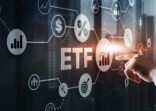The FSA Spy market buzz – 6 June 2025
Animal spirits run wild; Franklin Templeton is taking credit; EM banking revolution; Not all luxury is equal; Death of search and the AI machine; George Soros on wins and much more.

Although both the HSBC and JP Morgan funds are focused on Asia corporate bonds, the products have different investment processes, according to Ge.
Asset allocation (%)
|
HSBC |
JP Morgan |
|
| Government |
22.68 |
31.93 |
| Municipal |
– |
– |
| Corporate |
74.6 |
62.2 |
| Securitised |
– |
– |
| Cash and equivalents |
2.72 |
5.87 |
| Other |
– |
– |
The HSBC fund is focused on investing in hard currency bonds, while the JP Morgan product has a more flexible mandate of investing across the different Asian bond sub-asset classes.
The HSBC product aims to outperform its benchmark index, the Markit iBoxx Asian USD Bond Index, with a tracking error range of 0%-3%, according to Ge. Although the fund has the flexibility to invest up to 30% in local currency and high yield bonds, this exposure has been typically under 10%.
At the moment, local currency exposure is at 1%.
The fund also limits its duration to plus or minus one year of the benchmark, Ge added.
“It is more of a benchmark-aware product in the hard currency space,” he said, adding that the product is more of a “core offering” Asia corporate bond product.
Turning to the JP Morgan fund, Ge said that it invests in the different sub-asset classes in the Asia bond universe. For example, it can invest up to 25% in hard currency Asia sovereign bonds, up to 50% in local currencies, 25%-100% in non-government bonds and up to 35% in convertible bonds.
On the average, the product has historically invested around 15% of its assets in local currency bonds, according to Ge.
The managers of the HSBC fund also have the flexibility to adjust duration to in the range of 1.5 – 5 years.
Ge added that the JP Morgan product does not have any benchmark index.
“The fund has a benchmark-free, best ideas mandate to deliver returns,” Ge said.
However, although the JP Morgan fund is flexible, the managers aim to limit annual volatility to around 2%-5%, Ge noted.
 Smartphones on wheels
Smartphones on wheels
 Investors turn to real estate for alternative income
Investors turn to real estate for alternative income
 Fixed income – making ground in ESG as ETFs see rapid growth in AUM
Fixed income – making ground in ESG as ETFs see rapid growth in AUM
 Who’s afraid of higher interest rates?
Who’s afraid of higher interest rates?
 Investment Ideas for 2021: Explore the untapped potential in China Small Companies
Investment Ideas for 2021: Explore the untapped potential in China Small Companies
 Your Questions Answered by Federated Hermes Impact Opportunities
Your Questions Answered by Federated Hermes Impact Opportunities
 Thematic investment series: Innovative transformation cuts across “old” and “new” economy companies
Thematic investment series: Innovative transformation cuts across “old” and “new” economy companies
 Taking a thematic approach to harness disruption
Taking a thematic approach to harness disruption
 China’s post-pandemic growth gathers pace
China’s post-pandemic growth gathers pace
 How ETFs offer an active way to drive sustainable returns
How ETFs offer an active way to drive sustainable returns

Animal spirits run wild; Franklin Templeton is taking credit; EM banking revolution; Not all luxury is equal; Death of search and the AI machine; George Soros on wins and much more.
Part of the Mark Allen Group.
